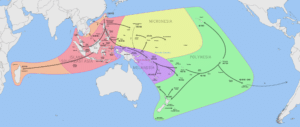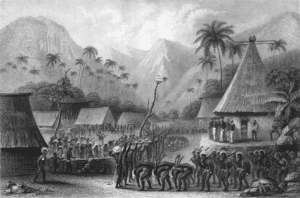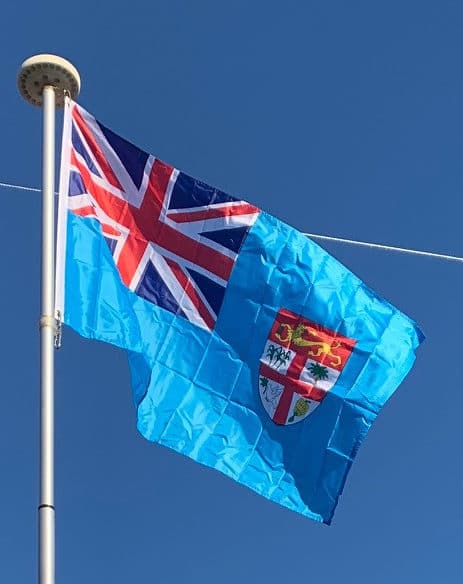Pottery art from Fijian towns shows that Fiji was settled by Austronesian peoples before or around 3500 to 1000 BC, with Melanesians following around a thousand years later, although the question of Pacific migration still lingers.

It is believed that the Lapita people or the ancestors of the Polynesians settled the islands first but not much is known of what became of them after the Melanesians arrived; they may have had some influence on the new culture, and archaeological evidence shows that they would have then moved on to Samoa, Tonga and even Hawai’i. Archeological evidence shows signs of settlement on Moturiki Island from 600 BC and possibly as far back as 900 BC. Aspects of Fijian culture are similar to the Melanesian culture of the western Pacific but have a stronger connection to the older Polynesian cultures. Trade between Fiji and neighbouring archipelagos long before European contact is testified by the canoes made from native Fijian trees found in Tonga and Tongan words being part of the language of the Lau group of islands. Pots made in Fiji have been found in Samoa and even the Marquesas Islands.
In the 10th century, the Tu’i Tonga Empire was established in Tonga, and Fiji came within its sphere of influence. The Tongan influence brought Polynesian customs and language into Fiji. The empire began to decline in the 13th century.
Early Interaction with Europeans:
Dutch explorer Abel Tasman was the first known European visitor to Fiji, sighting the northern island of Vanua Levu and the North Taveuni archipelago in 1643 while looking for the Great Southern Continent.
James Cook, the British navigator, visited one of the southern Lau islands in 1774. It was not until 1789, however, that the islands were charted and plotted, when William Bligh, the castaway captain of HMS Bounty, passed Ovalau and sailed between the main islands of Viti Levu and Vanua Levu en route to Batavia, in what is now Indonesia. Bligh Water, the strait between the two main islands, is named after him, and for a time, the Fiji Islands were known as the Bligh Islands.

The first Europeans to maintain substantial contact with the Fijians were sandalwood merchants, whalers and “beche-de-mer” (sea cucumber) traders. The first whaling vessel known to have visited was the Ann and Hope in 1799 and she was followed by many others in the 19th century. These ships came for drinking water, food and firewood and, later, for men to help man their ships. Some of the Europeans who came to Fiji in this period were accepted by the locals and were allowed to stay as residents.
By the 1820s, Levuka was established as the first European-style town in Fiji, on the island of Ovalau. The market for “beche-de-mer” in China was lucrative and British and American merchants set up processing stations on various islands. Local Fijians were utilised to collect, prepare and pack the product which would then be shipped to Asia
